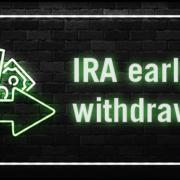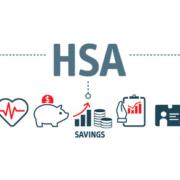The IRS recently issued its 2024 cost-of-living adjustments for more than 60 tax provisions. With inflation moderating slightly this year over last, many amounts will increase over 2023 amounts but not as much as in the previous year. As you implement 2023 year-end tax planning strategies, be sure to take these 2024 adjustments into account.
Also, keep in mind that under the Tax Cuts and Jobs Act (TCJA), annual inflation adjustments are calculated using the chained consumer price index (also known as C-CPI-U). This increases tax bracket thresholds, the standard deduction, certain exemptions and other figures at a slower rate than was the case with the consumer price index previously used, potentially pushing taxpayers into higher tax brackets and making various breaks worth less over time. The TCJA adopted the C-CPI-U on a permanent basis.
Individual income taxes
Tax-bracket thresholds increase for each filing status but, because they’re based on percentages, they increase more significantly for the higher brackets. For example, the top of the 10% bracket will increase by $600–$1,200, depending on filing status, but the top of the 35% bracket will increase by $18,725–$37,450, again depending on filing status.
| 2024 ordinary-income tax brackets |
| Tax rate | Single | Head of household | Married filing jointly or surviving spouse | Married filing separately |
| 10% | $0 – $11,600 | $0 – $16,550 | $0 – $23,200 | $0 – $11,600 |
| 12% | $11,601 – $47,150 | $16,551 – $63,100 | $23,201 – $94,300 | $11,601 – $47,150 |
| 22% | $47,151 – $100,525 | $63,101 – $100,500 | $94,301 – $201,050 | $47,151 – $100,525 |
| 24% | $100,526 – $191,950 | $100,501 – $191,950 | $201,051 – $383,900 | $100,526 – $191,950 |
| 32% | $191,951 – $243,725 | $191,951 – $243,700 | $383,901 – $487,450 | $191,951 – $243,725 |
| 35% | $243,726 – $609,350 | $243,701 – $609,350 | $487,451 – $731,200 | $243,726 – $365,600 |
| 37% | Over $609,350 | Over $609,350 | Over $731,200 | Over $365,600 |
The TCJA suspended personal exemptions through 2025. However, it nearly doubled the standard deduction, indexed annually for inflation, through 2025. In 2024, the standard deduction will be $29,200 (for married couples filing jointly), $21,900 (for heads of households), and $14,600 (for singles and married couples filing separately). After 2025, the standard deduction amounts are scheduled to drop back to the amounts under pre-TCJA law unless Congress extends the current rules or revises them.
Changes to the standard deduction could help some taxpayers make up for the loss of personal exemptions. But they might not help taxpayers who typically itemize deductions.
AMT
The alternative minimum tax (AMT) is a separate tax system that limits some deductions, doesn’t permit others and treats certain income items differently. If your AMT liability is greater than your regular tax liability, you must pay the AMT.
Like the regular tax brackets, the AMT brackets are annually indexed for inflation. In 2024, the threshold for the 28% bracket will increase by $11,900 for all filing statuses except married filing separately, which will increase by half that amount.
| 2024 AMT brackets |
| Tax rate | Single | Head of household | Married filing jointly or surviving spouse | Married filing separately |
| 26% | $0 – $232,600 | $0 – $232,600 | $0 – $232,600 | $0 – $116,300 |
| 28% | Over $232,600 | Over $232,600 | Over $232,600 | Over $116,300 |
The AMT exemptions and exemption phaseouts are also indexed. The exemption amounts in 2024 will be $85,700 for singles and $133,300 for joint filers, increasing by $4,400 and $6,800, respectively, over 2023 amounts. The inflation-adjusted phaseout ranges in 2024 will be $609,350–$952,150 (for singles) and $1,218,700–$1,751,900 (for joint filers). Amounts for married couples filing separately are half of those for joint filers.
Education and child-related breaks
The maximum benefits of certain education and child-related breaks will generally remain the same in 2024. But most of these breaks are limited based on a taxpayer’s modified adjusted gross income (MAGI). Taxpayers whose MAGIs are within an applicable phaseout range are eligible for a partial break — and breaks are eliminated for those whose MAGIs exceed the top of the range.
The MAGI phaseout ranges will generally remain the same or increase modestly in 2024, depending on the break. For example:
The American Opportunity credit. For tax years beginning after December 31, 2020, the MAGI amount used by joint filers to determine the reduction in the American Opportunity credit isn’t adjusted for inflation. The credit is phased out for taxpayers with MAGI in excess of $80,000 ($160,000 for joint returns). The maximum credit per eligible student is $2,500.
The Lifetime Learning credit. For tax years beginning after December 31, 2020, the MAGI amount used by joint filers to determine the reduction in the Lifetime Learning credit isn’t adjusted for inflation. The credit is phased out for taxpayers with MAGI in excess of $80,000 ($160,000 for joint returns). The maximum credit is $2,000 per tax return.
The adoption credit. The phaseout range for eligible taxpayers adopting a child will increase in 2024 — by $12,920. It will be $252,150–$292,150 for joint, head-of-household and single filers. The maximum credit will increase by $860, to $16,810 in 2024.
(Note: Married couples filing separately generally aren’t eligible for these credits.)
These are only some of the education and child-related tax breaks that may benefit you. Keep in mind that, if your MAGI is too high for you to qualify for a break for your child’s education, your child might be eligible to claim one on his or her tax return.
Gift and estate taxes
The unified gift and estate tax exemption and the generation-skipping transfer (GST) tax exemption are both adjusted annually for inflation. In 2024, the amount will be $13.61 million (up from $12.92 million for 2023).
The annual gift tax exclusion will increase by $1,000 to $18,000 in 2024.
Retirement plans
Nearly all retirement-plan-related limits will increase for 2024. Thus, depending on the type of plan you have, you may have limited opportunities to increase your retirement savings if you’ve already been contributing the maximum amount allowed:
| Type of limitation | 2023 limit | 2024 limit |
| Elective deferrals to 401(k), 403(b), 457(b)(2) and 457(c)(1) plans | $22,500 | $23,000 |
| Annual benefit limit for defined benefit plans | $265,000 | $275,000 |
| Contributions to defined contribution plans | $66,000 | $69,000 |
| Contributions to SIMPLEs | $15,500 | $16,000 |
| Contributions to traditional and Roth IRAs | $6,500 | $7,000 |
| “Catch-up” contributions to 401(k), 403(b), 457(b)(2) and 457(c)(1) plans for those age 50 and older | $7,500 | $7,500 |
| Catch-up contributions to SIMPLEs | $3,500 | $3,500 |
| Catch-up contributions to IRAs | $1,000 | $1,000 |
| Compensation for benefit purposes for qualified plans and SEPs | $330,000 | $345,000 |
| Minimum compensation for SEP coverage | $750 | $750 |
| Highly compensated employee threshold | $150,000 | $155,000 |
Your MAGI may reduce or even eliminate your ability to take advantage of IRAs. Fortunately, IRA-related MAGI phaseout range limits all will increase for 2024:
Traditional IRAs. MAGI phaseout ranges apply to the deductibility of contributions if a taxpayer (or his or her spouse) participates in an employer-sponsored retirement plan:
- For married taxpayers filing jointly, the phaseout range is specific to each spouse based on whether he or she is a participant in an employer-sponsored plan:
- For a spouse who participates, the 2024 phaseout range limits will increase by $7,000, to $123,000–$143,000.
- For a spouse who doesn’t participate, the 2024 phaseout range limits will increase by $12,000, to $230,000–$240,000.
- For single and head-of-household taxpayers participating in an employer-sponsored plan, the 2024 phaseout range limits will increase by $4,000, to $77,000–$87,000.
Taxpayers with MAGIs in the applicable range can deduct a partial contribution; those with MAGIs exceeding the applicable range can’t deduct any IRA contribution.
But a taxpayer whose deduction is reduced or eliminated can make nondeductible traditional IRA contributions. The $7,000 contribution limit for 2024 (plus $1,000 catch-up, if applicable, and reduced by any Roth IRA contributions) still applies. Nondeductible traditional IRA contributions may also be beneficial if your MAGI is too high for you to contribute (or fully contribute) to a Roth IRA.
Roth IRAs. Whether you participate in an employer-sponsored plan doesn’t affect your ability to contribute to a Roth IRA, but MAGI limits may reduce or eliminate your ability to contribute:
- For married taxpayers filing jointly, the 2024 phaseout range limits will increase by $12,000, to $230,000–$240,000.
- For single and head-of-household taxpayers, the 2024 phaseout range limits will increase by $8,000, to $146,000–$161,000.
You can make a partial contribution if your MAGI falls within the applicable range, but no contribution if it exceeds the top of the range.
(Note: Married taxpayers filing separately are subject to much lower phaseout ranges for both traditional and Roth IRAs.)
2024 cost-of-living adjustments and tax planning
With many of the 2024 cost-of-living adjustment amounts trending higher, you may have an opportunity to realize some tax relief next year. In addition, with certain retirement-plan-related limits also increasing, you may have the chance to boost your retirement savings. If you have questions on the best tax-saving strategies to implement based on the 2024 numbers, please give us a call. We’d be happy to help.
© 2023












